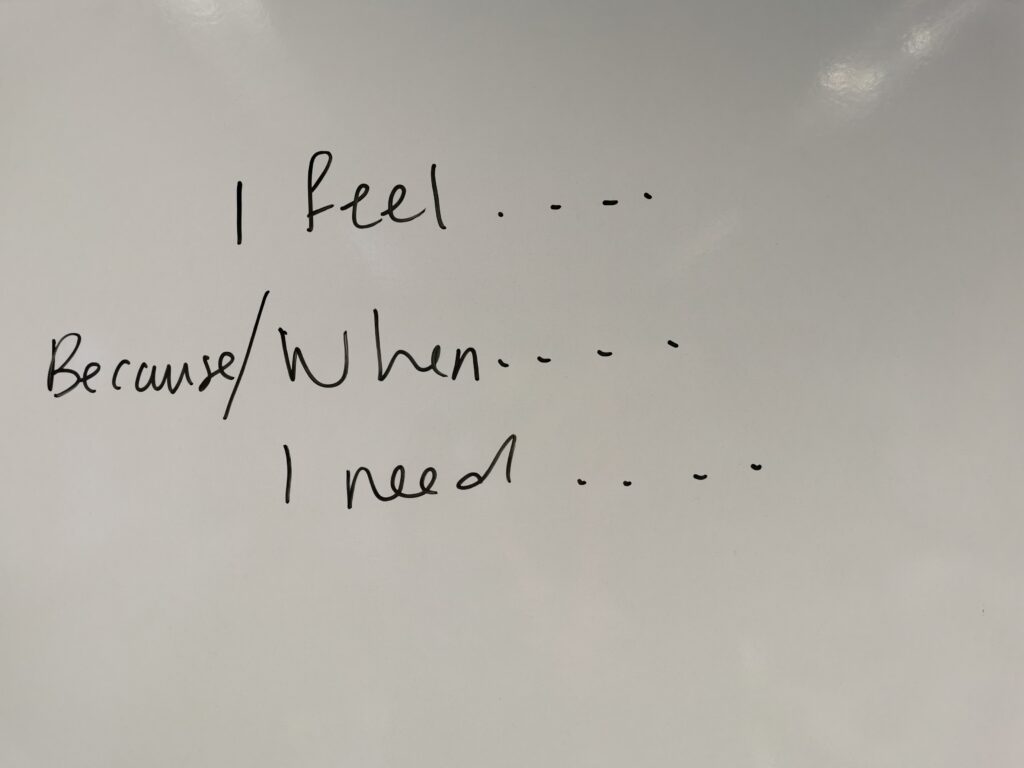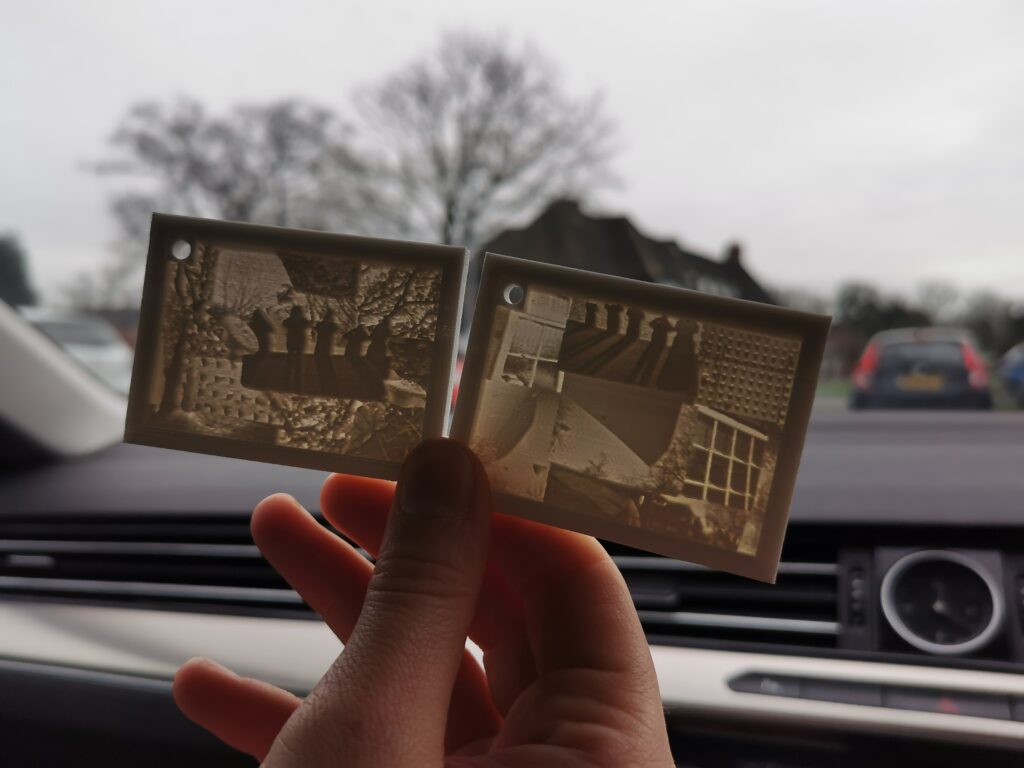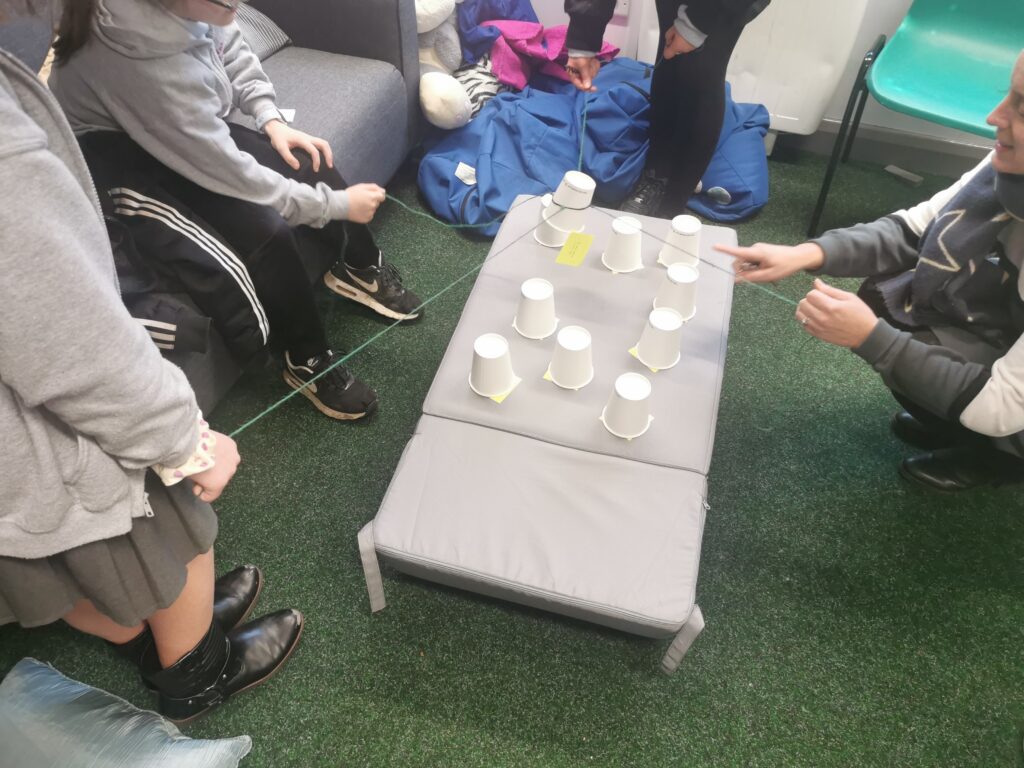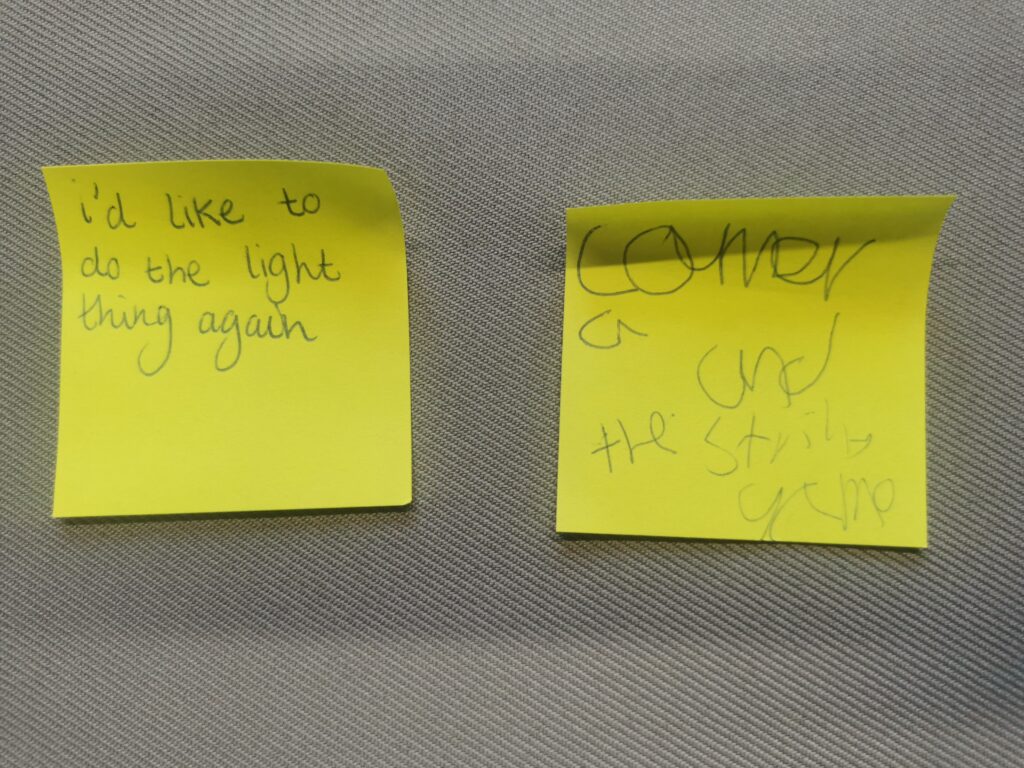 A lot has happened in two weeks on the Making of Us project we are running at the Together Trust.
A lot has happened in two weeks on the Making of Us project we are running at the Together Trust.
This is a challenging environment and there have been times when we as artists have felt quite out of our depth and unsure of how best to offer the young people in our group an experience that is interesting and engaging. In our last session, a fortnight ago, we tried to use reflective exercises to discern what they wanted to do more of but the results were so varied between the group (and those present so few in number) that for me at least this only muddied the water more, and left me feeling quite deflated. Someone wanted to do more collaging for example, while others definitely didn’t.
While being participant-led is obviously something worthy to aim for, the reality can be messy when those participants have very different opinions, likes and dislikes.
We communicated to the school that we would benefit from more support and they have risen to the challenge – yesterday’s session felt much better all round. We have started sending them visual guides to what our next session will entail and communication in both directions has been strengthened. We had a face-to-face debrief after our session yesterday, which was really valuable – this is the first time we’ve done that (we’ve previously asked for feedback by email) but it was definitely much better. Now to plan our next few sessions – we have three left, Covid-permitting.
Our session yesterday involved lots of games – the name game (famous person name on your forehead) and a game where you guess how many thumbs people will hold up. The creative activity was led by Jamie, we wrote down feelings and worries from our heads on post-it notes and then scribbled them up and tore or shredded the paper. Then wrote things on blue paper towels and, once outside, wet these and threw them at a coloured target Jamie had made. We attracted a lot of attention from other students at the school – which we had been warned about by staff – and not all our three participants fully engaged. One got very into it but the two girls had one try, missed the target and wouldn’t do it again.
I keep trying to remind myself not to take these things personally when an activity or session doesn’t hit the mark with everyone involved – I am learning to lower my expectations and see it as a win if all of the young people present engage with something during our time there. They have different needs and energy levels and can be up and down at different points during our sessions, but all got involved in the game-playing part of the session. And – as our Making of Us mentor pointed out to us – having an element of choice over whether to be involved in a particular activity is an important part of this process. They can be an audience member and still be participating, but in a different way – as long as they aren’t disrupting it. It doesn’t come easily to me to think like this as I am inclined to be output-focussed but I am trying to keep this in mind.
There’s a lot to learn and think about during this practical side of the programme. About working with a partner setting and developing positive relationships; working with challenging participants; working with an artistic collaborator; about being process-driven not output-focussed; about trying new things ourselves as practitioners (stepping out of our own comfort zones just as we are asking the participants to do); about having boundaries and recognising and expressing our needs; about my own temperament and what kinds of projects and participants would and wouldn’t suit me, going forward.





 Yesterday was session 4 out of 8 workshops we are delivering for Ashcroft School in Cheadle, as part of our involvement in the Making of Us programme. So we’re now halfway through, an apt point to do some reflection – with the young people and between ourselves as facilitators.
Yesterday was session 4 out of 8 workshops we are delivering for Ashcroft School in Cheadle, as part of our involvement in the Making of Us programme. So we’re now halfway through, an apt point to do some reflection – with the young people and between ourselves as facilitators.

